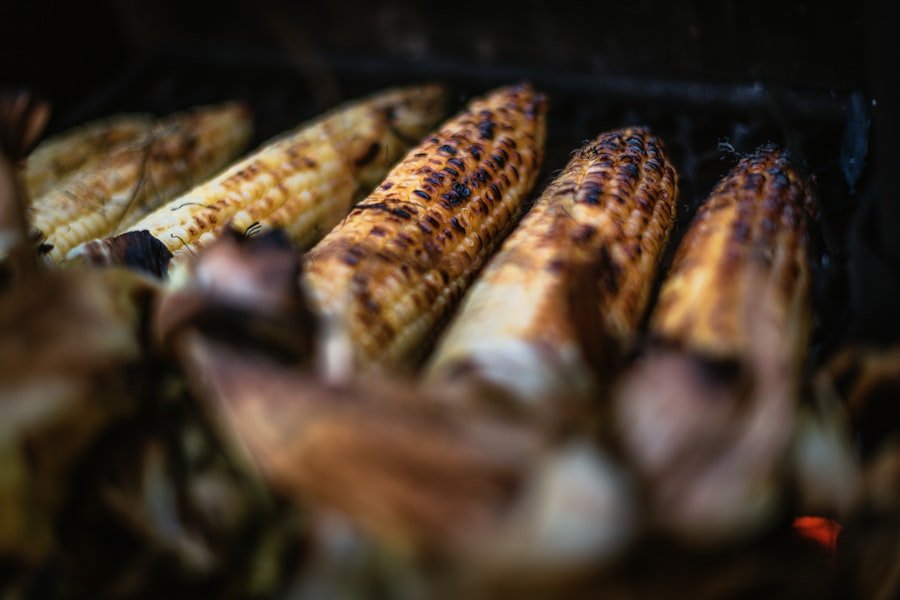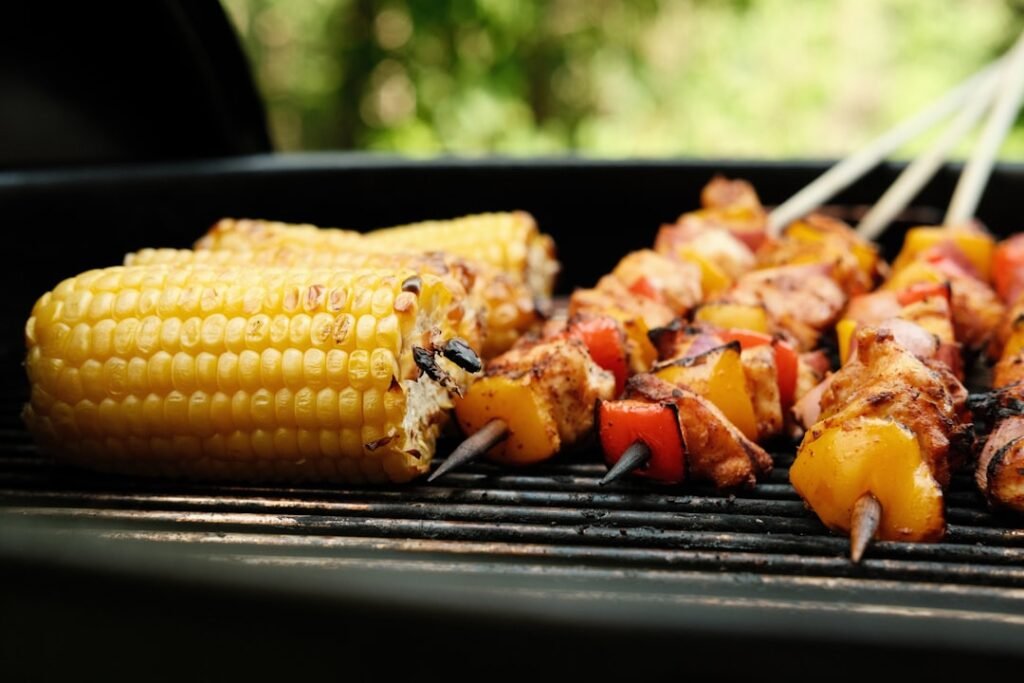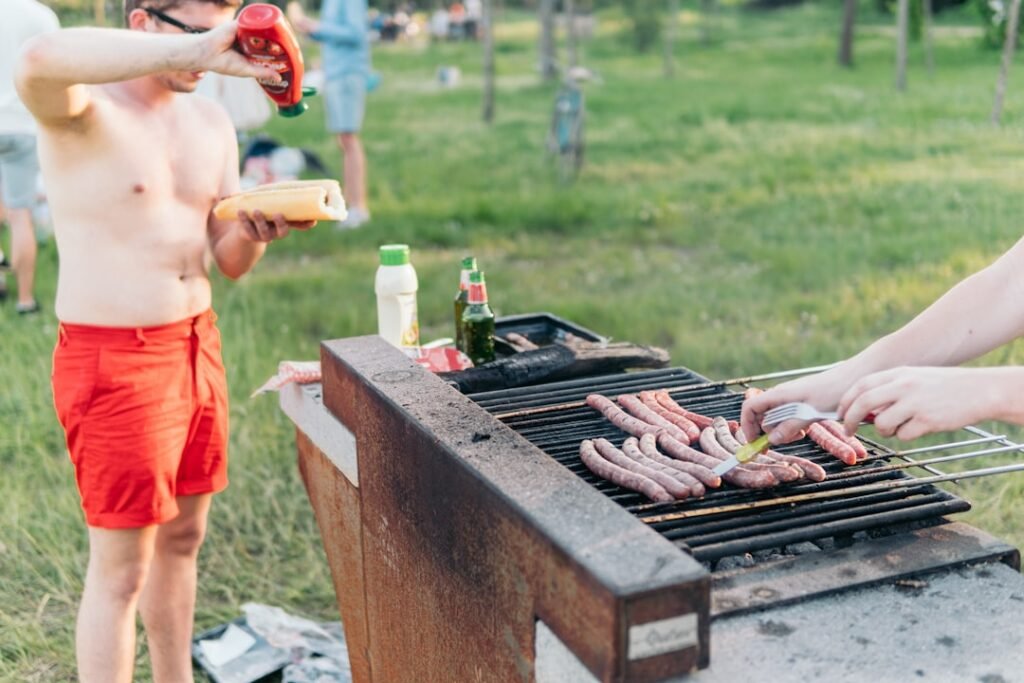Mastering the Art of Outdoor Cooking

When I think about outdoor cooking, the first thing that comes to mind is the equipment I need to make the experience enjoyable and successful. The right tools can make all the difference, transforming a simple meal into a culinary adventure. I often start with the basics: a reliable grill or portable stove.
Depending on my cooking style, I might opt for a charcoal grill, which imparts a smoky flavor to my food, or a gas grill for its convenience and ease of use. Each option has its merits, and I find that my choice often depends on the occasion and the type of food I plan to prepare. In addition to the grill, I also consider other essential tools such as utensils, pots, and pans.
A good set of grilling tools—like tongs, spatulas, and brushes—are indispensable for managing food on the grill. I also like to have a sturdy cutting board and sharp knives on hand for prepping ingredients. If I’m planning to cook over an open flame, I might bring along cast iron skillets or Dutch ovens, which are perfect for stews or baked dishes.
Ultimately, I believe that investing in quality equipment not only enhances my cooking experience but also ensures that I can tackle a variety of recipes with confidence.
Understanding Different Cooking Methods for Outdoor Cooking
Outdoor cooking offers a plethora of methods that can elevate my culinary skills and broaden my palate. One of my favorite techniques is grilling, which involves cooking food over direct heat. This method is not only quick but also allows me to achieve that coveted charred flavor that is synonymous with outdoor meals.
I often experiment with different types of wood chips to add unique flavors to my grilled dishes, whether it’s hickory for a robust taste or applewood for a sweeter profile. Another method I enjoy is smoking, which requires a bit more patience but rewards me with deeply flavored meats and vegetables. Using a smoker or a grill set up for indirect heat, I can infuse my food with aromatic smoke over several hours.
This slow-cooking technique is perfect for larger cuts of meat like brisket or ribs, allowing the flavors to meld beautifully while keeping the meat tender and juicy. Additionally, I’ve dabbled in campfire cooking, where I can roast marshmallows or even bake bread in the coals. Each method brings its own charm and challenges, making outdoor cooking an exciting endeavor.
Selecting the Best Ingredients for Outdoor Cooking

The foundation of any great outdoor meal lies in the ingredients I choose. Freshness is key; therefore, I often visit local farmers’ markets to source seasonal produce. Not only do I enjoy supporting local farmers, but I also find that fresh ingredients enhance the flavors of my dishes significantly.
Whether it’s ripe tomatoes for a salad or vibrant bell peppers for skewers, using high-quality ingredients makes all the difference in my outdoor cooking experience. When it comes to proteins, I prefer to select cuts that are well-suited for grilling or smoking. Chicken thighs, pork chops, and beef steaks are some of my go-to choices because they hold up well on the grill and can be marinated to enhance their flavor.
Additionally, I like to incorporate seafood into my outdoor meals; grilling fish or shrimp adds a delightful touch of elegance to any gathering. By carefully selecting my ingredients based on freshness and quality, I ensure that every meal I prepare outdoors is not only delicious but also memorable.
Mastering the Art of Grilling and Barbecuing
| Technique | Temperature | Time |
|---|---|---|
| Direct Grilling | High heat (400-450°F) | Short (10-15 minutes) |
| Indirect Grilling | Medium heat (350-375°F) | Medium (30-45 minutes) |
| Smoking | Low heat (225-250°F) | Long (2-6 hours) |
Grilling and barbecuing are two techniques that I have come to love and appreciate over time. While they may seem similar, they each have their own unique characteristics that require different approaches. Grilling is typically done over high heat for shorter periods, allowing me to achieve those beautiful grill marks while keeping the inside juicy.
I’ve learned that preheating the grill is essential; it ensures that my food cooks evenly and prevents sticking. On the other hand, barbecuing involves cooking at lower temperatures over a longer duration, often using indirect heat. This method allows me to break down tougher cuts of meat while infusing them with smoky flavors from wood chips or charcoal.
I’ve spent many weekends perfecting my barbecue technique, experimenting with rubs and sauces to create a signature flavor profile. The satisfaction of serving perfectly cooked ribs or pulled pork to friends and family is unparalleled, making every effort worthwhile.
Exploring Unique Recipes for Outdoor Cooking
One of the most exciting aspects of outdoor cooking is the opportunity to explore unique recipes that showcase my creativity. I love experimenting with traditional dishes by adding my own twist. For instance, instead of the usual burgers, I might prepare lamb patties infused with herbs and spices, served with tzatziki sauce on pita bread.
This not only surprises my guests but also elevates the outdoor dining experience. I also enjoy incorporating international flavors into my outdoor meals. For example, I might prepare skewers inspired by Mediterranean cuisine, featuring marinated chicken or vegetables grilled to perfection and served with a side of couscous salad.
Another favorite is making foil packets filled with seasonal vegetables and herbs drizzled with olive oil; these cook beautifully over the grill and are easy to clean up afterward. By exploring diverse recipes, I keep my outdoor cooking fresh and exciting while delighting those who gather around my table.
Tips for Maintaining Food Safety during Outdoor Cooking

While outdoor cooking is undoubtedly enjoyable, it’s crucial for me to prioritize food safety to ensure everyone has a pleasant experience. One of the first steps I take is to keep raw meats separate from other ingredients to prevent cross-contamination. Using separate cutting boards and utensils for raw proteins versus vegetables helps me maintain hygiene throughout the cooking process.
I also pay close attention to temperature control. Investing in a reliable meat thermometer allows me to check that meats are cooked to safe internal temperatures without guessing. Additionally, I make sure to keep perishable items chilled until it’s time to cook them; using coolers filled with ice helps maintain freshness during outdoor gatherings.
By following these safety tips, I can focus on enjoying the cooking process while ensuring that everyone enjoys their meal without worry.
Enhancing the Outdoor Cooking Experience with Seasonings and Marinades
Seasonings and marinades play an essential role in elevating my outdoor cooking game. A well-crafted marinade can transform even the simplest cuts of meat into flavorful masterpieces. I often experiment with various combinations of oils, acids like vinegar or citrus juice, and an array of herbs and spices tailored to complement the dish I’m preparing.
For instance, a zesty lemon-garlic marinade works wonders on chicken, while a rich soy sauce-based marinade adds depth to beef. In addition to marinades, I love exploring different seasoning blends that can enhance my dishes without overwhelming them. A sprinkle of smoked paprika or a dash of cumin can add layers of flavor that make my meals stand out.
Fresh herbs like rosemary or thyme are also staples in my outdoor cooking arsenal; they not only provide aromatic qualities but also add vibrant colors to my dishes. By thoughtfully incorporating seasonings and marinades into my outdoor cooking routine, I create meals that are bursting with flavor and character.
Creating Memorable Outdoor Dining Experiences
Ultimately, outdoor cooking is about more than just preparing food; it’s about creating memorable experiences with friends and family. Setting the scene is crucial; I often arrange comfortable seating around a fire pit or picnic table adorned with twinkling lights and colorful tableware. The ambiance plays a significant role in enhancing the overall experience, making everyone feel welcome and relaxed.
I also enjoy involving my guests in the cooking process whenever possible. Whether it’s allowing them to assemble their own skewers or encouraging them to share their favorite recipes, this interactive element fosters connection and camaraderie around the grill. As we gather around the table to enjoy our creations, laughter and conversation flow freely, turning each meal into a cherished memory.
By focusing on both the food and the experience surrounding it, I ensure that every outdoor gathering is one that will be remembered long after the last bite has been taken.






